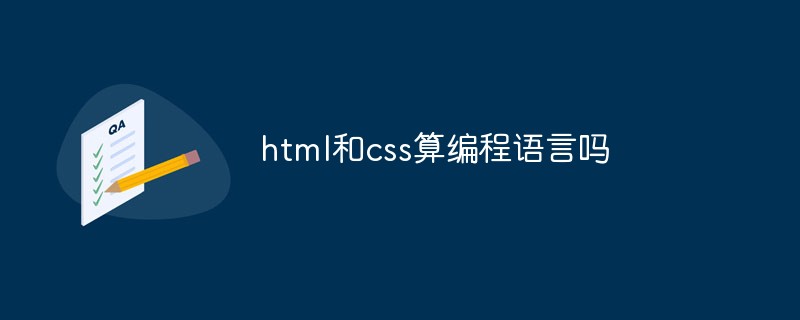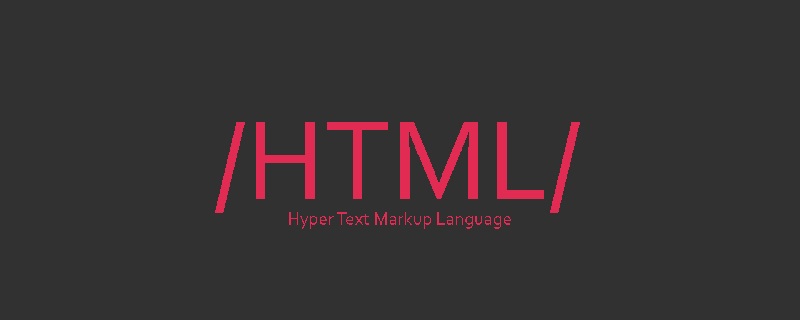html's global attributes refer to attributes that apply to all HTML elements. They can be applied to any HTML tag to provide common functions and behaviors. They can define class names, unique identifiers, styles, and additional information for elements. Language, custom data, tab order, shortcut keys, editability and draggability, etc. These global attributes make HTML more flexible and scalable to meet various needs and application scenarios.

# Operating system for this tutorial: Windows 10 system, Dell G3 computer.
HTML global attributes refer to attributes that apply to all HTML elements. These attributes can be applied to any HTML tag to provide common functionality and behavior. Global attributes are not specific to a certain tag, but apply to the entire HTML document. Some commonly used HTML global attributes will be introduced in detail below.
class: The class attribute is used to define one or more class names for HTML elements. Class names can be used in CSS style selectors, as well as in JavaScript to operate and access elements. Through the class attribute, we can assign the same style or behavior to different elements.
id: The id attribute defines a unique identifier for an HTML element. The id is globally unique, and each element in the HTML document should have a different id. Through the id attribute, we can select a specific element in CSS styles and operate and access it in JavaScript.
style: The style attribute is used to define inline styles for HTML elements. Through the style attribute, we can define the style of an element directly in the HTML tag without using an external CSS file or an internal style sheet. The value of the style attribute is a set of key-value pairs of CSS properties and values.
title: The title attribute is used to provide additional information for HTML elements. When a user hovers over an element with a title attribute, the browser displays the value of the title attribute as a tooltip. This is useful for providing a description or additional information about an element.
lang: The lang attribute is used to define the language of HTML elements. By specifying the appropriate language code, you can ensure that screen readers and translation tools understand and process the text correctly. This is very important for internationalization and multilingual websites.
data-*: The data-* attribute is used to add custom data to HTML elements. This custom data can be manipulated and accessed using JavaScript. The naming of data-* attributes needs to start with "data-", and can be followed by any customized name.
tabindex: The tabindex attribute is used to define the order of HTML elements when traversing the Tab key. By setting different tabindex values, you can adjust the focus order of elements during tab key traversal. This is useful for creating highly accessible web pages and forms.
accesskey: The accesskey attribute is used to define shortcut keys for HTML elements. By setting the accesskey attribute, we can assign a shortcut key on the keyboard so that the user can access the element by pressing that shortcut key. This is important to improve the accessibility and usability of web pages.
contenteditable: The contenteditable attribute is used to specify whether the HTML element is editable. By setting the contenteditable attribute to "true" we can allow the user to edit the content of the element. This is useful for creating editable web pages and rich text editors.
draggable: The draggable attribute is used to specify whether an HTML element can be dragged. By setting the draggable attribute to "true", you can allow the user to perform some actions by dragging the element. This is useful for creating drag-and-drop functionality or implementing custom dragging behavior.
To summarize, HTML global attributes are a set of attributes that apply to all HTML elements and provide common functionality and behavior. With these attributes, we can define class names, unique identifiers, styles, additional information languages, custom data, tab order, shortcut keys, editability and draggability, etc. for elements. These global attributes make HTML more flexible and scalable to meet various needs and application scenarios.
The above is the detailed content of What are the global attributes of html. For more information, please follow other related articles on the PHP Chinese website!
 HTML超文本标记语言--超在那里?(文档分析)Aug 02, 2022 pm 06:04 PM
HTML超文本标记语言--超在那里?(文档分析)Aug 02, 2022 pm 06:04 PM本篇文章带大家了解一下HTML(超文本标记语言),介绍一下HTML的本质,HTML文档的结构、HTML文档的基本标签和图像标签、列表、表格标签、媒体元素、表单,希望对大家有所帮助!
 html和css算编程语言吗Sep 21, 2022 pm 04:09 PM
html和css算编程语言吗Sep 21, 2022 pm 04:09 PM不算。html是一种用来告知浏览器如何组织页面的标记语言,而CSS是一种用来表现HTML或XML等文件样式的样式设计语言;html和css不具备很强的逻辑性和流程控制功能,缺乏灵活性,且html和css不能按照人类的设计对一件工作进行重复的循环,直至得到让人类满意的答案。
 web前端笔试题库之HTML篇Apr 21, 2022 am 11:56 AM
web前端笔试题库之HTML篇Apr 21, 2022 am 11:56 AM总结了一些web前端面试(笔试)题分享给大家,本篇文章就先给大家分享HTML部分的笔试题(附答案),大家可以自己做做,看看能答对几个!
 HTML5中画布标签是什么May 18, 2022 pm 04:55 PM
HTML5中画布标签是什么May 18, 2022 pm 04:55 PMHTML5中画布标签是“<canvas>”。canvas标签用于图形的绘制,它只是一个矩形的图形容器,绘制图形必须通过脚本(通常是JavaScript)来完成;开发者可利用多种js方法来在canvas中绘制路径、盒、圆、字符以及添加图像等。
 html中document是什么Jun 17, 2022 pm 04:18 PM
html中document是什么Jun 17, 2022 pm 04:18 PM在html中,document是文档对象的意思,代表浏览器窗口的文档;document对象是window对象的子对象,所以可通过“window.document”属性对其进行访问,每个载入浏览器的HTML文档都会成为Document对象。
 html5废弃了哪个列表标签Jun 01, 2022 pm 06:32 PM
html5废弃了哪个列表标签Jun 01, 2022 pm 06:32 PMhtml5废弃了dir列表标签。dir标签被用来定义目录列表,一般和li标签配合使用,在dir标签对中通过li标签来设置列表项,语法“<dir><li>列表项值</li>...</dir>”。HTML5已经不支持dir,可使用ul标签取代。
 Html5怎么取消td边框May 18, 2022 pm 06:57 PM
Html5怎么取消td边框May 18, 2022 pm 06:57 PM3种取消方法:1、给td元素添加“border:none”无边框样式即可,语法“td{border:none}”。2、给td元素添加“border:0”样式,语法“td{border:0;}”,将td边框的宽度设置为0即可。3、给td元素添加“border:transparent”样式,语法“td{border:transparent;}”,将td边框的颜色设置为透明即可。


Hot AI Tools

Undresser.AI Undress
AI-powered app for creating realistic nude photos

AI Clothes Remover
Online AI tool for removing clothes from photos.

Undress AI Tool
Undress images for free

Clothoff.io
AI clothes remover

AI Hentai Generator
Generate AI Hentai for free.

Hot Article

Hot Tools

SublimeText3 Mac version
God-level code editing software (SublimeText3)

SAP NetWeaver Server Adapter for Eclipse
Integrate Eclipse with SAP NetWeaver application server.

ZendStudio 13.5.1 Mac
Powerful PHP integrated development environment

mPDF
mPDF is a PHP library that can generate PDF files from UTF-8 encoded HTML. The original author, Ian Back, wrote mPDF to output PDF files "on the fly" from his website and handle different languages. It is slower than original scripts like HTML2FPDF and produces larger files when using Unicode fonts, but supports CSS styles etc. and has a lot of enhancements. Supports almost all languages, including RTL (Arabic and Hebrew) and CJK (Chinese, Japanese and Korean). Supports nested block-level elements (such as P, DIV),

SublimeText3 English version
Recommended: Win version, supports code prompts!







